 At the tail end of summer 2019, after the Indian Ocean peregrinations, (here’s a sample, with manta rays towards the end), we went scuba diving for scallops in New Brunswick, and yes, it was as AWESOME as it sounds.
At the tail end of summer 2019, after the Indian Ocean peregrinations, (here’s a sample, with manta rays towards the end), we went scuba diving for scallops in New Brunswick, and yes, it was as AWESOME as it sounds.
We had a great time, and had planned to go back in 2020, but you can guess what happened. Hopefully this year will be different. The bayside cottage (with grill, we are not savages) is already reserved, has been since 2019, and I must say the owners of the Motel & Chalets Acadien were very cool about this whole global debacle thing and moneys and what not). We have our very own not rented dry suits this year and a bit more cold water experience. We are keeping our fingers crossed that provincial boundaries may be as well.

Sidebar: you may, or not, be familiar with the term “Acadien”, or Acadian in English. It describes the descendants of the French settlers of the maritime provinces (and northern Maine). What you may not know (’cause history is taught like crap), is that after what was pretty much a world war ended with the Treaty of Paris (the one from 1763 not 1783), the Brits agreed to officially allow Roman Catholicism in what used to be la Nouvelle France, and so some Acadians decided to return.
Return from where you ask? Well, simply put, exile, forced relocation. Of the 14k population, more than11k where essentially rounded up like cattle, and shipped to various places where they could not offer support to the French and their Indian allies in the war against the British (that was the excuse/reason). Thousands died due to shipwrecks, disease and malnutrition.
However even after the treaty certain places, like Nova Scotia, didn’t really want them back (the French being papists and all). Discriminatory laws were enacted against them with all the subtlety of the times. Consequently a lot of Acadians went to New Brunswick, which is why it is still bilingual today. My original point, man do I ramble, was to bring to your attention that some Acadians eventually ended up in Louisiana, formerly a French territory (named for the French king Louis the 14th). That group of people is where we get the term Cajun today (Acadian, ‘cadian, Cajun). And yes, Cajun was derogatory until it became a badge of pride.

But back to diving.
This was not our typical scuba adventure. Generally speaking, fishing with scuba gear (as opposed to spearfishing while free diving), is pretty much illegal, at least in most places we have been to. So when we heard about this possibility while in Egypt (thank you Marianne and Étienne), we got immediately interested and booked pretty much a year in advance sight unseen. The trip was organized by a scuba shop out of Québec City, Plongée Nautilus, and they were super on point and über friendly. We would have to get our dry suit class, a point which was briefly debated since we mostly scuba warm waters and we figured what’s the long term use? However, the allure of a new scuba experience (and fresh wild scallops) was just too strong. So we signed up for the trip and learned (last minute), to dive in drys. That is why you will have zero underwater pictures of this adventure (tune back in September 2021). Between unfamiliar gear (dry suit noobs), extra task management (collecting scallops, fighting off bullying lobsters, pulling a large surface marker buoy), and unfamiliar waters/conditions, screwing around with a gopro would have been looking for trouble. Also it might have resulted in less scallops, and that was not an option.
We duly got our fishing licenses from Fisheries and Oceans Canada, and when the time came rented a few cylinders, extra cold water gear, and brought our espresso machine on the 800km road trip.

We stopped in Kamouraska for our traditional shopping spree at Lauzier’s fish shop (superb stuff, smoked sturgeon and eel are amongst our favourites, with ice cold vodka it’s heavenly). We had lunch and a beer across the street, then immensely enjoyed the drive all the way to New Brunswick and the Bay des Chaleurs. Canada really is beautiful, and the road was calming.

We arrived on time for the briefing, got all the info from the boss of the expedition (hi Stef!). She made sure we knew what was what, that we had our odds and ends, showed us the ropes (literally it turns out, to tie the collection bags to the buoys), and was all around helpful and knowledgeable, including fixing a neck leak in my suit. She’s the sort of diver you tend to call sir.


The view from our room was not exactly tropical, but it still smelled of the sea and adventure, it was exotic in its own way.


We would dive in the morning and in the afternoon, clean the scallops while out sea and store them in ziploc bags (we’re bringing a vacuum sealer this year). This meant that our first lunch was, yes you guessed it, fresh scallops. Cooking them would have been a sign of weakness, so they got a light ceviche inspired treatment instead. The fishing was pretty good…
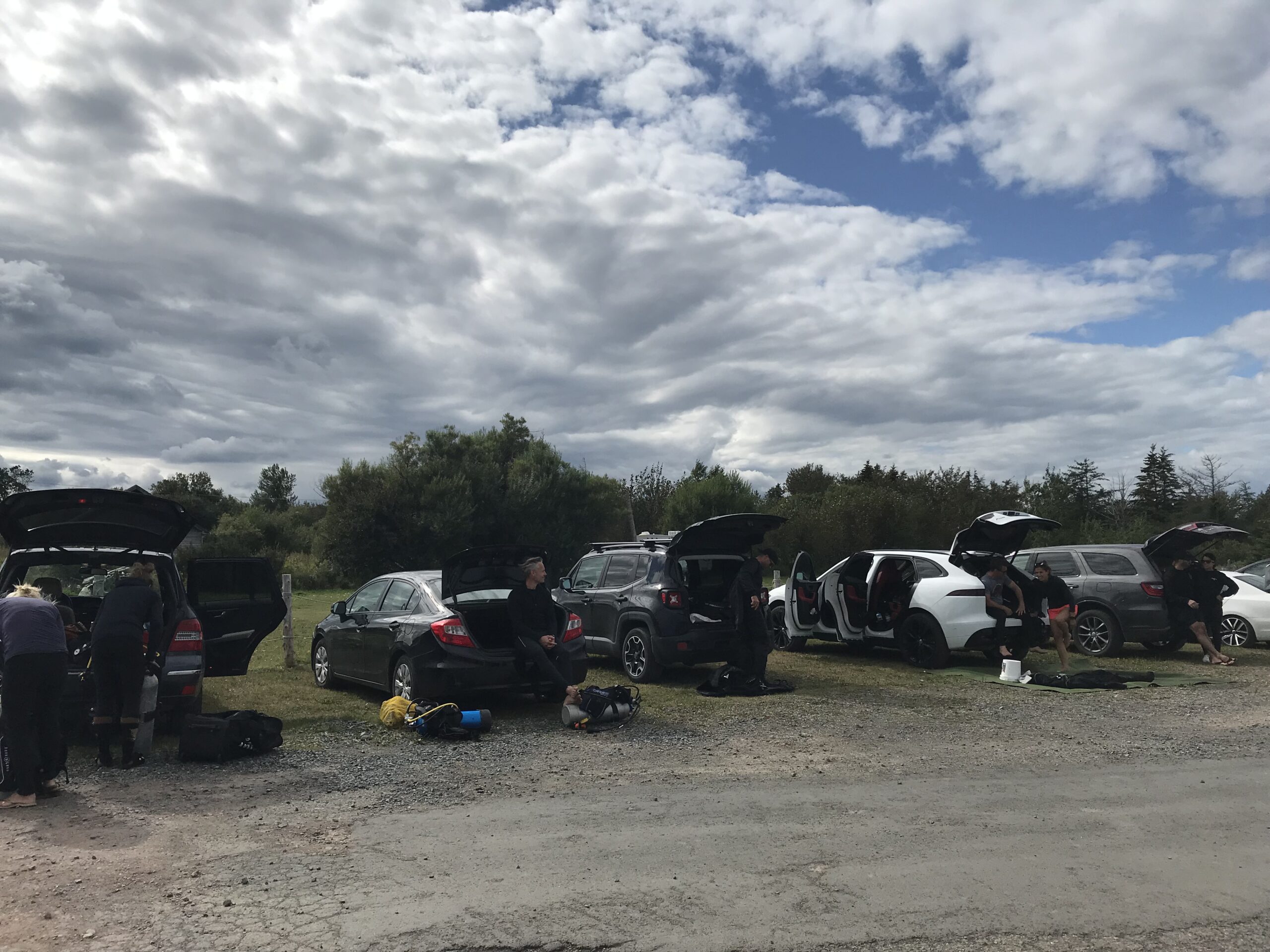





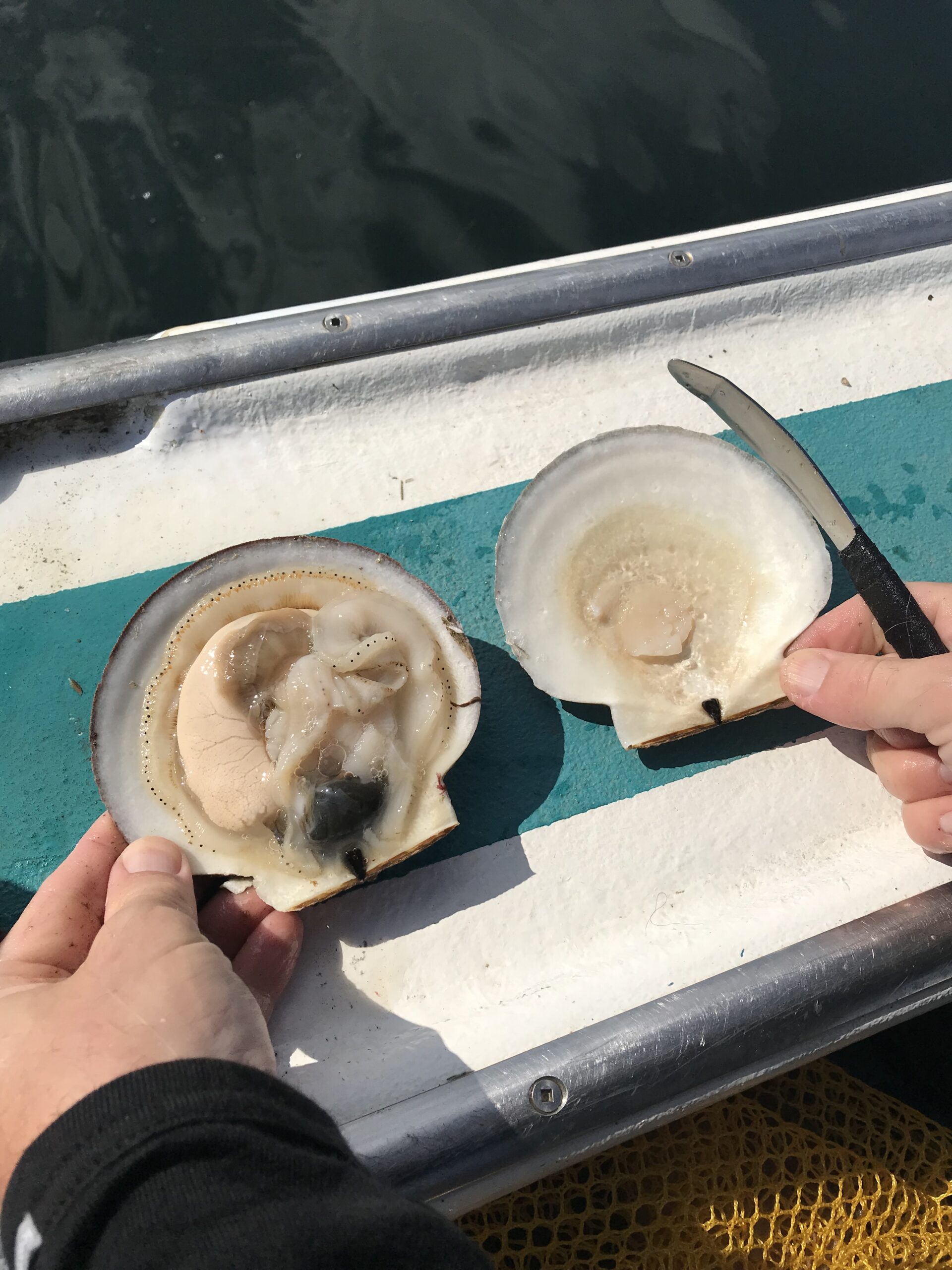


… and we even found the occasional pearl.


The dives were easier than I expected, fairly shallow, around 45 feet, and the water was, in a dry suit, quite bearable at 44F/6,6C when coldest. The viz was murky and around 20 feet but the rope linking our collection nets to a surface buoy made sure no one got lost. I was not kidding about the aggressive lobsters. They make nests in the sand and will snap at you if you flyover them too low, and no, you can’t grab any.
Once your quota is full, or you get low on air, you pop up (not literally, we still did safety stops), and the fishing boat will eventually pick you up. Perhaps the biggest challenge is bladder management, you might be bobbing at the surface a while before being picked up, and you’re not flying to shore after that, time your morning coffee appropriately (if you don’t have a pee valve in your suit). Canadian regulations specify that you can keep no part of the scallop other then the meat (abductor muscle), so it all goes back into the sea (I hope for reproductive purposes). Which is too bad, the gonads are a prized ingredient elsewhere and quite tasty.
The divers we met were pleasant people on the technical side. Lot’s of doubles.

Some divers are gearheads, and I have it on good authority that my “entry level” dry suit was like bringing a Honda Civic to a formula one race. Oh well. Speaking of Civics, ours performed extremely well (Butch always gets us where we’re going) as a post dive foot stool and a drying rack.


Our post dive day ritual remained centered around a cold beer and logbooks, as it should be. Note to travellers, New Brunswick booze laws mean you will have to find a state run liquor store, even for beer. Thankfully there was one nearby, with a cool selection of products we don’t get in Québec.

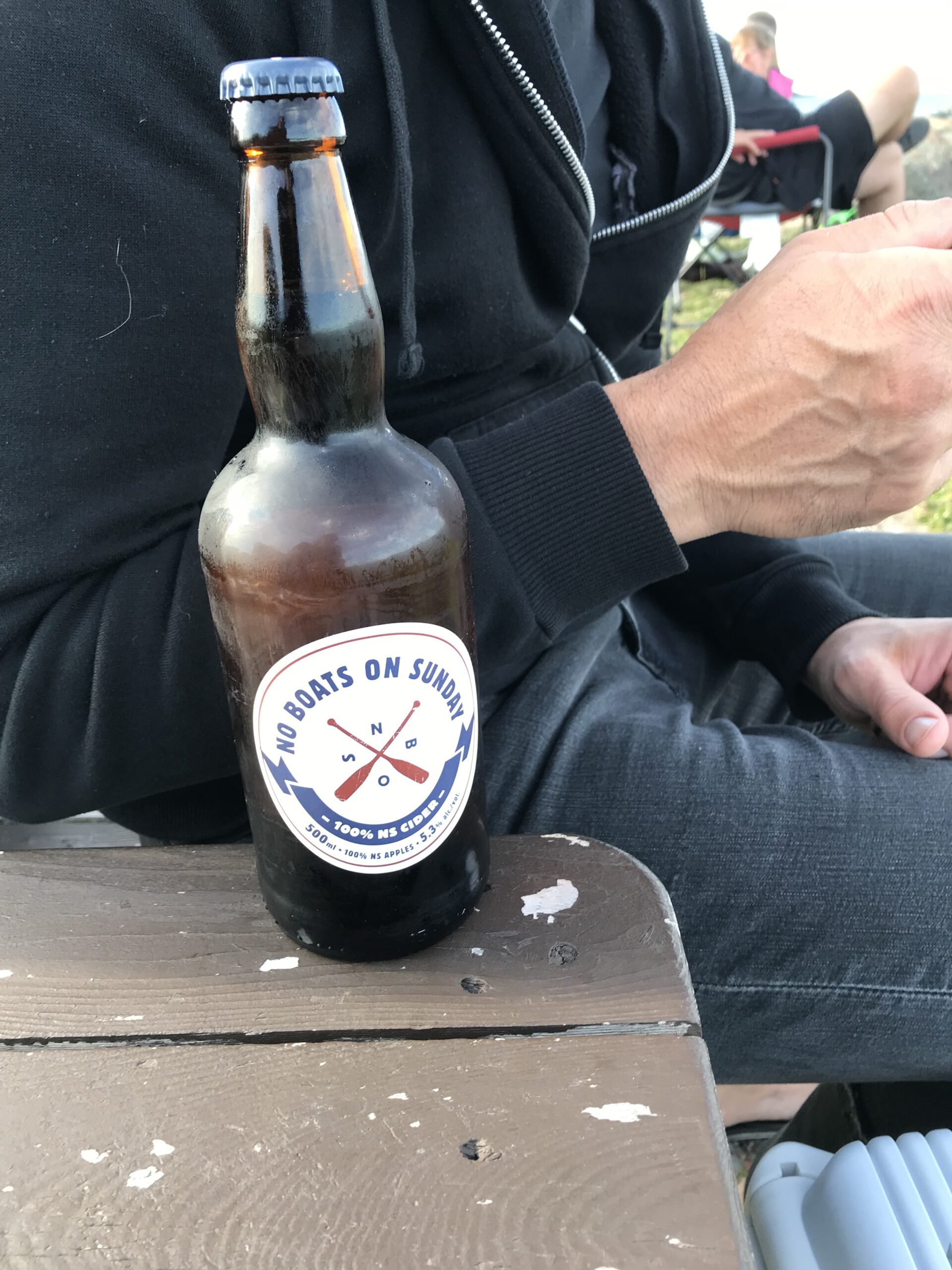
It’s hard to overstate how much of a good time we had. The locals were nice, the place very picturesque and there was diving, what else do you need? A great communal meal to wrap things up (excellent smoked chicken, like wow) and a bonfire? Check.



As is frequently the case (though not always mind you), it was too soon time to head back home.
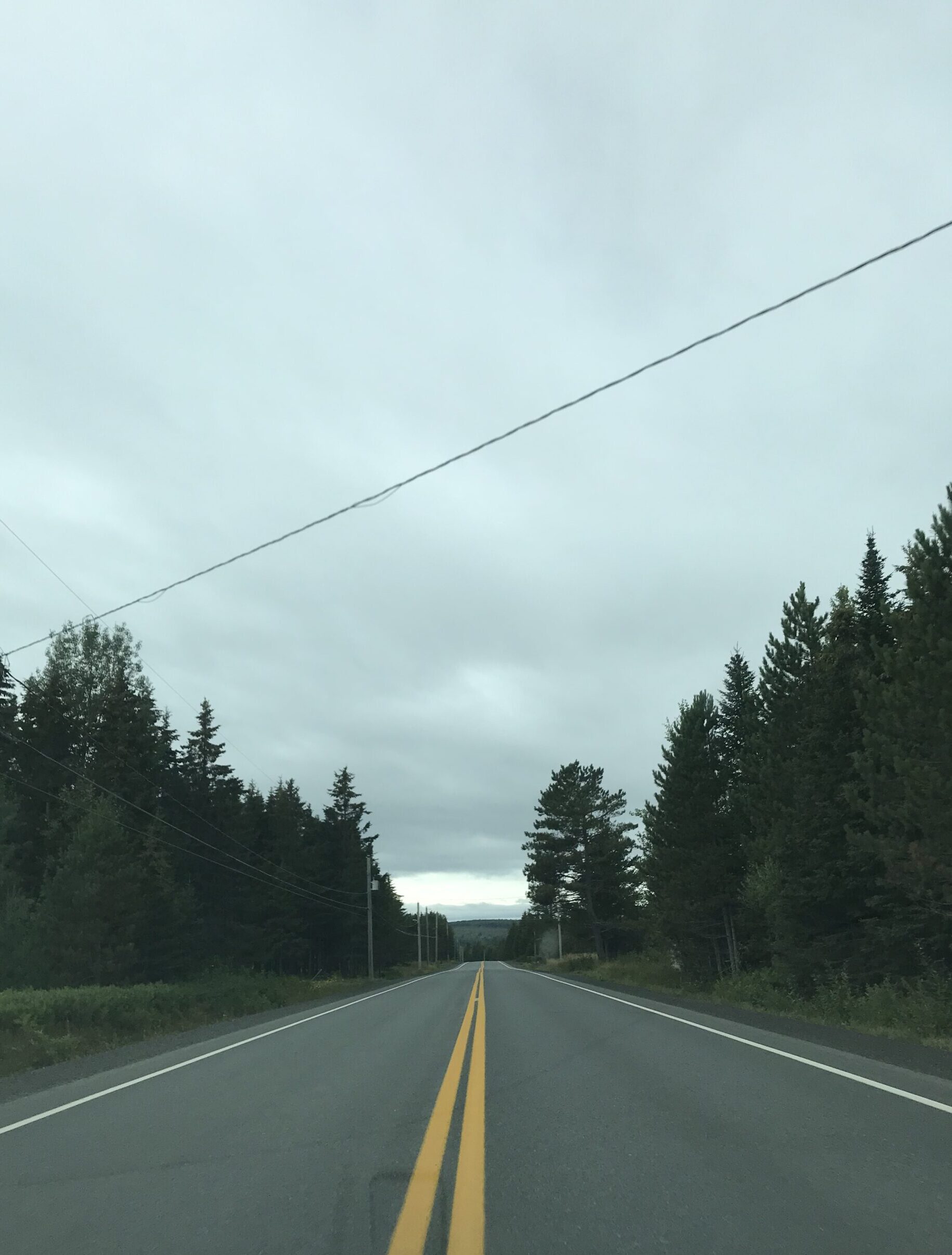
A fun time, and we brought home some pearls, both the literal and metaphorical kinds.

And because I have a legendary spouse, both of those were turned into treasures.
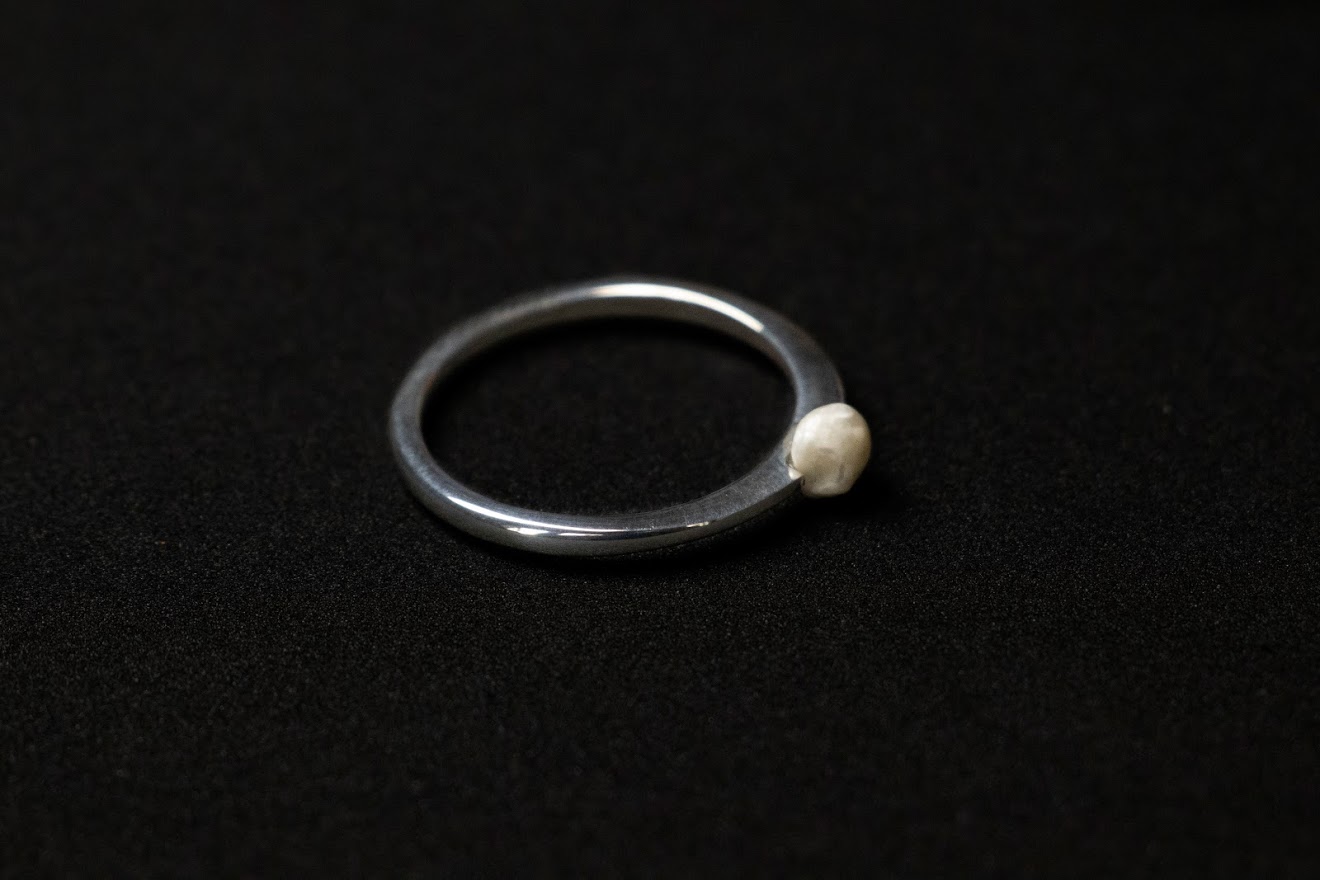

Hope to see you under the waves real soon.
